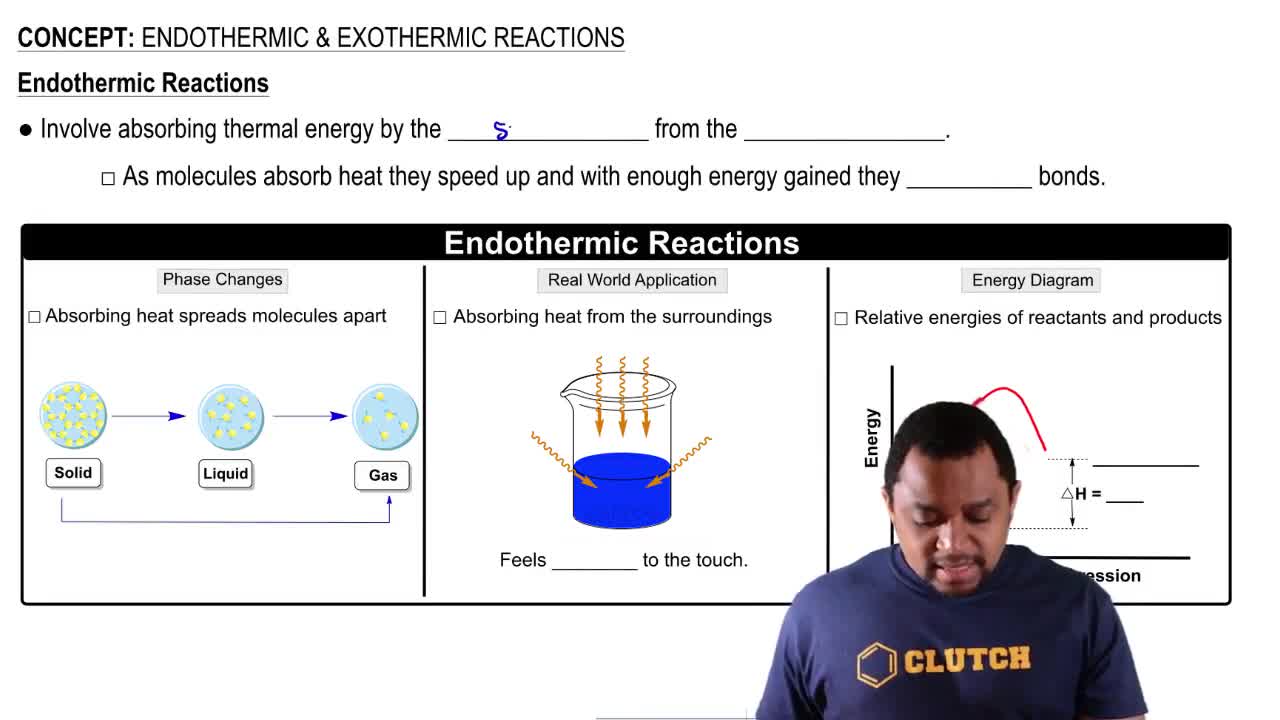Textbook Question
What fraction of the molecules in a gas at 300 K collide with an
energy equal to or greater than Ea when Ea equals 50 kJ/mol?
What is the value of this fraction when Ea is 100 kJ/mol?
634
views
 Verified step by step guidance
Verified step by step guidance



Consider three reactions with different values of Ea and ΔE:
Reaction 1. Ea = 20 kJ>mol; ΔE = -60 kJ/mol
Reaction 2. Ea = 10 kJ>mol; ΔE = -20 kJ/mol
Reaction 3. Ea = 40 kJ>mol; ΔE = +15 kJ/mol
(b) Assuming that all three reactions are carried out at the same temperature and that all three have the same frequency factor A, which reaction is the fastest and which is the slowest?